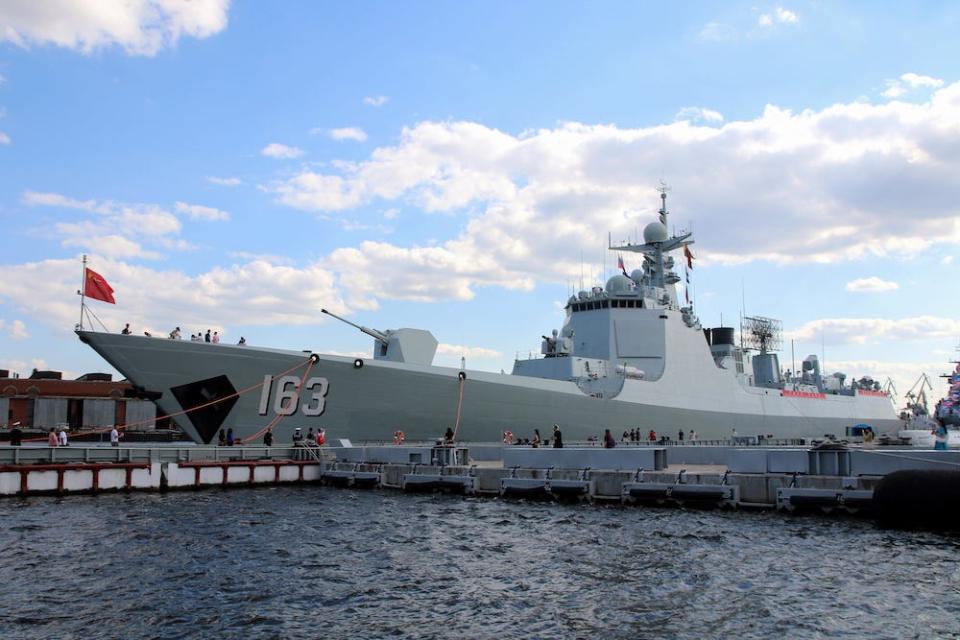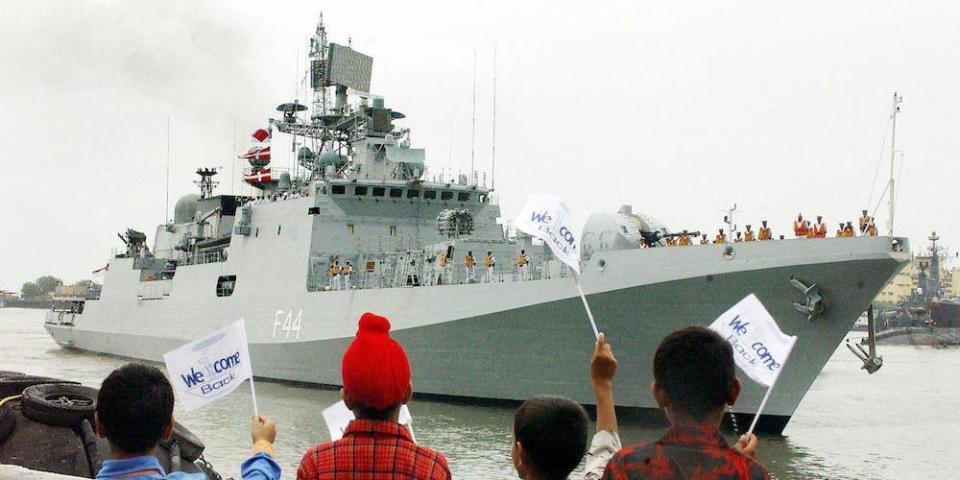India and China joined Russia's Navy Day celebrations as Putin tries to project anti-Western group
- Oops!Something went wrong.Please try again later.
Russia's Navy Day saw participation from India and China, bolstering Putin's anti-Western ties.
There was a notable absence of Russia's Black Sea Fleet at the parade, after losses to Ukraine.
Putin also warned of retaliation if the US goes ahead with deploying long-range missiles to Germany.
Russia's Navy Day saw warships from India and China join the celebrations as President Vladimir Putin sought to project the strength of his anti-Western alliance.
China sent the Jiaozuo, a Type 052D destroyer, and India sent the Tabar, a stealth frigate, to the naval parade in St Petersburg on Sunday, according to Russia's foreign ministry.
Algeria also sent La Soummam, a training ship, the ministry said.

According to the Washington DC-based Institute for the Study of War, the gathering was meant "to showcase Russia's relations with a number of non-Western states as part of efforts to create a supposed Russian-led group of states to rally against the West."
In total, representatives of 31 countries — including Cuba, Vietnam, Egypt, and Brazil — attended, according to Russian state-owned outlet Argumenty i Fakty.
The parade came amid ongoing efforts by the Kremlin to deepen ties with countries like India and China, which have sent warships to the Navy Day celebrations in previous years.

Despite claiming not to support Russia's war in Ukraine, China has emerged as a major supplier of dual-use parts crucial to its war effort — the sort of support that the US government has repeatedly called it out for.
The two countries have also long participated in joint military exercises and the Pentagon recently said they are showing increasing willingness to collaborate in the Arctic.
Even so, China and Russia's ties appear to be uneasy and opportunistic, built more on a common desire to tamp down Western influence.
Meanwhile, India's Prime Minister Narendra Modi's recent trip to Russia to meet with Putin also appeared to signal an indifference to US disapproval from India.
President Joe Biden has attempted to persuade Modi to take a harder line on Russia, but this has largely failed.
A conspicuous absence
While Russia's Navy Day celebrations typically involve all its main military port cities, this year's didn't include Sevastopol, the naval base in occupied Crimea that hosts Russia's Black Sea Fleet.
Prior to the 2022 invasion of Ukraine, Sevastopol regularly featured in the parade despite the objections of Ukraine's government.
But now it is an active hot-war zone under continual pressure from Ukrainian forces, and Russia has largely relocated the remains of the fleet to the safer port of Novorossiysk, on its own shores.
Commentators were quick to point out Sevastopol's absence, with European Council on Foreign Relations chief Carl Bildt posting the following graphic to X, making plain the extent of the fleet's losses:
It was 🇷🇺 Navy Day today, but there was no parade in the Black Sea Fleet. You wonder why… pic.twitter.com/av42K5cpm5
— Carl Bildt (@carlbildt) July 28, 2024
Meanwhile, Putin devoted part of his speech on the day to warning the US that Russia would retaliate if it pressed ahead with recently announced plans to locate long-range missile systems in Germany by 2026.
Putin said his forces will take "mirror measures" in response.
Read the original article on Business Insider

